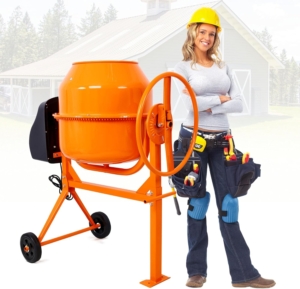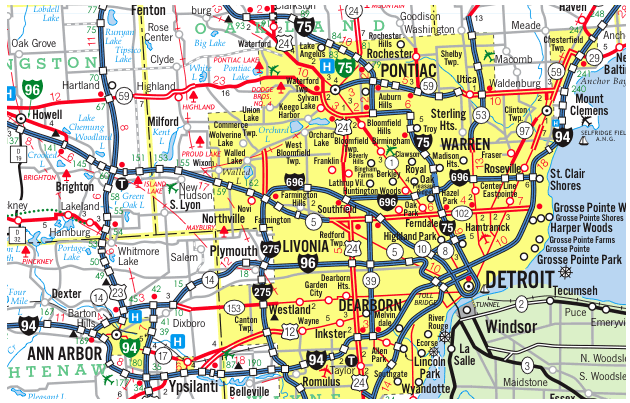Building a Concrete Foundation in Cold Climates: Preparation and Construction Codes
Building a concrete foundation in cold climates presents unique challenges that require careful preparation and adherence to construction codes to ensure the structural integrity and durability of the foundation. Extreme cold temperatures, freezing ground conditions, and the potential for frost heaving can impact the performance of concrete and its ability to cure properly. Proper planning, the use of appropriate materials, and compliance with local construction codes are all essential for a successful project.
Challenges of Cold-Climate Concrete Foundations
In colder climates, the primary concern when pouring a concrete foundation is the ground’s ability to freeze. When the soil freezes, the foundation is at risk of shifting, cracking, or uneven settlement, leading to serious structural problems over time. Additionally, concrete that is poured in sub-freezing temperatures can be difficult to cure and gain the necessary strength, potentially compromising the durability of the entire foundation.
To mitigate these risks, several measures must be taken during the preparation and construction phases. Here’s a breakdown of the key factors and best practices for building a concrete foundation in cold climates:
1. Site Preparation: Managing Cold-Weather Conditions
a. Soil Inspection and Preparation
The first step in building a foundation in cold climates is to thoroughly assess the soil and site conditions. Freeze-thaw cycles can affect the soil beneath the foundation, particularly in areas with expansive clay or moist soils. Contractors often recommend compacting and grading the soil to ensure proper drainage, which reduces the chances of frost heaving. In some cases, soil stabilization techniques may be needed to improve the foundation’s stability.
b. Excavation Timing
Excavating the foundation site before winter fully sets in is a crucial step. Excavation should ideally be completed in the fall to avoid working in frozen ground. If excavation needs to occur during the winter months, heated equipment or ground thawing methods such as electric blankets or portable heaters may be necessary to ensure that the soil can be worked with.
c. Temporary Frost Protection
Frost blankets or insulated tarps should be used to cover the excavated soil to prevent the ground from freezing during the curing process. This is especially important when foundations are shallow and sit near the frost line. A common method involves using insulated forms to protect the poured concrete from freezing.
2. Concrete Mix and Curing: Addressing Temperature Constraints
a. Choosing the Right Concrete Mix
In cold climates, the concrete mix must be adapted to ensure that it remains workable and can cure properly despite low temperatures. Cold-weather concrete typically involves using a mix with higher cement content, which generates heat during hydration, helping it set faster. Additionally, the use of admixtures such as accelerators can reduce the time it takes for the concrete to set.
b. Temperature Monitoring and Protection During Curing
The curing process is critical to achieving optimal strength in concrete. In cold weather, it’s essential to monitor the temperature of both the concrete and the ambient air. Concrete should be poured at temperatures above 40°F (4°C) to allow proper hydration. If the temperature drops too low, the concrete will freeze before it has set properly, leading to potential cracking or weakened strength.
To protect freshly poured concrete, heating elements or insulated enclosures may be used. Concrete curing blankets, thermal mats, and heated air can help keep the temperature above the required threshold during the curing period, which may last several days to weeks depending on the size of the pour.
3. Foundation Design and Codes: Ensuring Long-Term Stability
Construction codes in cold climates address the need for foundations to withstand the stresses of freeze-thaw cycles and soil movement. The following key elements are part of standard codes:
a. Frost Depth and Footing Design
One of the most critical considerations in cold-weather foundation design is the frost line, which refers to the depth at which the ground freezes. In colder regions, footings need to be placed below the frost line to avoid the risk of frost heaving. The frost depth varies depending on the geographic location, so local building codes will specify the minimum depth for footings. For example, in some regions of Canada and the northern U.S., footings may need to extend to a depth of 4 feet (1.2 meters) or more, while in warmer regions, the frost line may be only a few inches deep.
b. Concrete Strength Requirements
Building codes specify the minimum compressive strength of concrete for foundations, which can be particularly important in cold climates. Generally, concrete should achieve a strength of at least 2500 psi (pounds per square inch) before it is exposed to freezing temperatures. Codes also outline the recommended curing times and methods that help concrete develop its strength before any exposure to freezing conditions.
c. Slab Foundations vs. Crawl Spaces
In colder climates, slab-on-grade foundations are less common due to the need for deep footings to prevent frost heaving. Instead, many homes feature crawl spaces or basements with insulated foundations to protect them from freezing. Crawl spaces, when properly insulated, provide a buffer against the cold and prevent frost from affecting the structure. Building codes often require specific types of insulation or venting in these areas to minimize the risk of frozen pipes and other cold-weather issues.
d. Insulation and Moisture Control
To protect the foundation and reduce the risk of frost damage, insulation around the perimeter is highly recommended. In cold climates, exterior insulation may be required to ensure that the foundation remains warm enough to avoid freezing. Insulating the foundation walls or adding a layer of rigid foam board around the exterior helps maintain the temperature above freezing.
Building codes may also dictate the need for vapor barriers in foundations to prevent moisture buildup, which can exacerbate freezing and thawing cycles. Effective moisture control is crucial for preventing foundation damage.
4. Compliance with Local Building Codes
It is essential to familiarize yourself with local building codes and construction practices. These codes are designed to address the unique challenges posed by cold climates and ensure the safety and durability of the structure. Compliance with the following standards is typically required:
- Frost protection standards: The frost depth and the proper placement of footings.
- Concrete curing requirements: Specific guidelines for cold-weather curing procedures.
- Insulation standards: Codes outlining the type and amount of insulation needed for foundations.
- Inspection protocols: Inspections are typically required at various stages of the foundation process to ensure compliance with safety and structural integrity standards.
Conclusion
Building a concrete foundation in a cold climate requires meticulous planning, the use of appropriate materials, and adherence to local building codes to ensure the safety, durability, and long-term performance of the structure. By addressing the unique challenges posed by freezing temperatures, frost, and soil movement, you can prevent potential issues such as cracking, shifting, and settling. Proper site preparation, thoughtful concrete mix and curing techniques, and compliance with local construction codes will help ensure a solid foundation that stands the test of time, even in the harshest winter conditions.




 Our Construction company is Servicing Southeast Michigan, Detroit and the Tri-County area Wyane, Oakland and Macomb;
Our Construction company is Servicing Southeast Michigan, Detroit and the Tri-County area Wyane, Oakland and Macomb;
